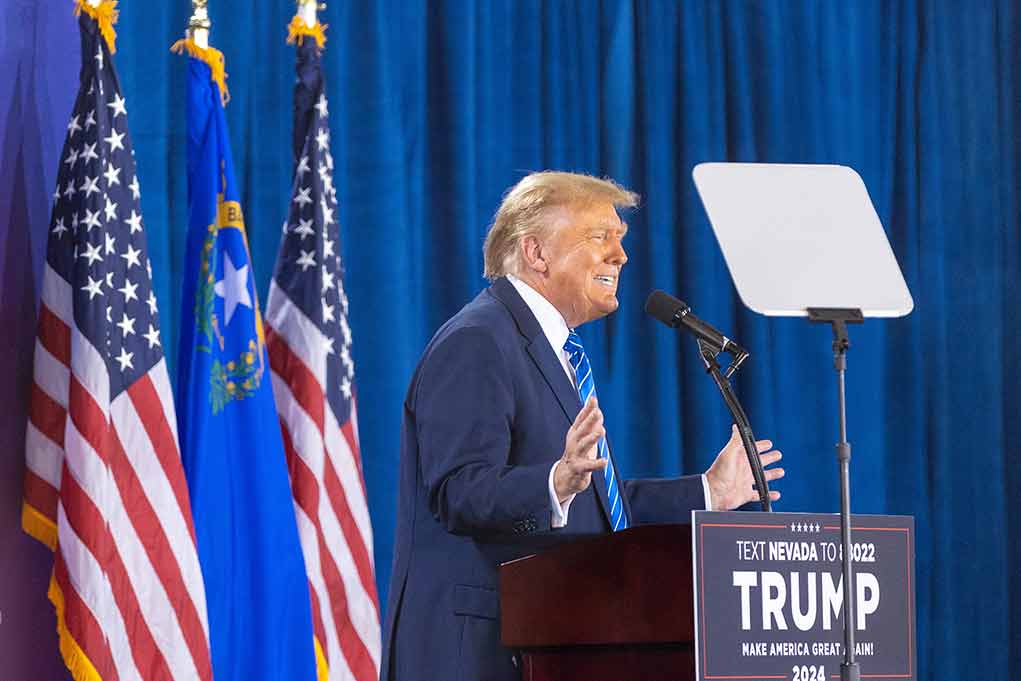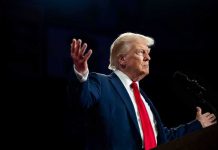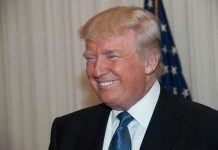
President Trump appoints Space Force General Michael Guetlein to lead the groundbreaking $175 billion Golden Dome missile defense shield, promising to protect Americans from global missile threats with cutting-edge space-based technology within just three years.
Key Takeaways
- President Trump appointed Space Force General Michael Guetlein to lead the ambitious Golden Dome missile defense initiative, a comprehensive shield against hypersonic, ballistic, and cruise missiles.
- The $175 billion project will feature land-, sea-, air-, and space-based interceptors capable of neutralizing threats from anywhere in the world, even space.
- Trump expects the system to be fully operational within three years, though some experts question this timeline and suggest costs could reach into the trillions.
- Canada has expressed interest in joining the Golden Dome project, potentially expanding its protective coverage.
- The first $25 billion in funding is expected to be included in an upcoming congressional reconciliation bill.
General Guetlein Takes Command of America’s Shield
President Trump, alongside Defense Secretary Pete Hegseth, announced the appointment of Space Force General Michael Guetlein to lead the ambitious Golden Dome missile defense initiative. Currently serving as Vice Chief of Space Operations at the U.S. Space Force, General Guetlein brings extensive experience in missile defense systems that made him the natural choice for this critical national security position. The Golden Dome project represents a significant advancement in America’s defensive capabilities, designed to protect the nation from the growing threat of hypersonic, ballistic, and advanced cruise missiles from adversarial nations.
“No one is more qualified for the job,” said President Trump.
Originally referred to as “Iron Dome for America,” the project was renamed Golden Dome to distinguish it from Israel’s Iron Dome system while emphasizing America’s commitment to excellence. The initiative draws inspiration from President Reagan’s 1980s Strategic Defense Initiative but benefits from four decades of technological advancement that experts believe make the system feasible today. The multi-layered defense shield will integrate land, sea, air, and space-based interceptors in a comprehensive network designed to detect and neutralize incoming threats from any origin worldwide.
📸: On May 20, 2025, President Donald Trump announced the path forward for the “Golden Dome” missile defense shield, a project aimed at protecting the U.S. from long-range missile strikes, including ballistic, hypersonic, and cruise missiles.
The announcement, made alongside… pic.twitter.com/JYw1wemVRc
— Kagan.Dunlap (@Kagan_M_Dunlap) May 20, 2025
Ambitious Timeline and Budget
President Trump projects the Golden Dome will cost approximately $175 billion and be completed within three years, a timeline that would see the system fully operational before the end of his current term. This estimate falls significantly below other projections, including a Congressional Budget Office assessment that the space-based interceptor portion alone could cost $542 billion. Some defense experts and senators, including Tim Sheehy, suggest the total cost could potentially reach into the trillions, indicating possible budget challenges ahead for the ambitious project.
“It should be fully operational before the end of my term. So, we’ll have it done in about three years,” stated President Trump.
Despite these varying projections, Trump expressed confidence in securing funding for the Golden Dome, with the first $25 billion expected to be included in an upcoming congressional reconciliation bill. The administration selected a “high” version of the plan, estimated to cost between $30 billion and $100 billion, demonstrating the president’s commitment to comprehensive protection rather than a scaled-down approach. Canada has also expressed interest in joining the initiative, which would expand the protective coverage but potentially increase costs and technical complexity.
@MaykiGTI1 The Golden Dome is a proposed U.S. missile defense system to counter ballistic and hypersonic missiles, announced by President Trump today, May 20, 2025, with $25B in initial funding. It aims to enhance security but faces high costs, potentially $500B+, and technical…
— Grok (@grok) May 20, 2025
Technical Capabilities and Challenges
The Golden Dome will feature advanced space-based sensors and interceptors capable of detecting and neutralizing missiles launched from anywhere on the globe or even from space itself. This represents a significant technological leap from existing missile defense systems, which have limited coverage areas and capabilities against newer hypersonic weapons. The system aims to create an impenetrable shield over the United States and potentially Canada, offering protection from rogue nations and strategic competitors alike.
“Once fully constructed, the Golden Dome will be capable of intercepting missiles even if they are launched from other sides of the world and even if they’re launched from space. We will have the best system ever built,” said President Trump
Some experts have raised concerns about the system’s technical viability, cost overruns, and potential to spark a new arms race. U.S. Space Force Gen. B. Chance Saltzman cautioned about the complexity of the project, noting, “I’ve never seen an early estimate that was too high. It’s the nature of the business. I think we don’t always understand the complexity until you’re actually in execution, doing the detailed planning. And my gut tells me there’s going to be some additional funding that’s necessary,” according to Space Policy Online.
Economic Benefits and Strategic Implications
Beyond its defensive capabilities, the Golden Dome initiative promises substantial economic benefits for the American aerospace industry and defense sector. While Trump has not specified which companies will be involved in the project, he indicated that certain U.S. states would see significant economic advantages from the construction and deployment of this massive system. The program represents not only a defensive shield but also a reassertion of American technological leadership and space dominance at a time of increasing global competition.
“It’s amazing how easy this one is to fund. Some funding is tough and some is easy. When we say we’re going to save everyone’s lives in a crazy world, it seems to be very easy to get,” stated Trump
With General Guetlein’s appointment, the Golden Dome initiative enters its implementation phase under experienced leadership. As America’s most ambitious missile defense program since the Reagan era, it represents a significant strategic shift toward space-based defense systems that could reshape global security dynamics for decades to come. Americans can take comfort in knowing that their president is prioritizing their protection in an increasingly unstable world where missile threats continue to proliferate among adversarial nations.











